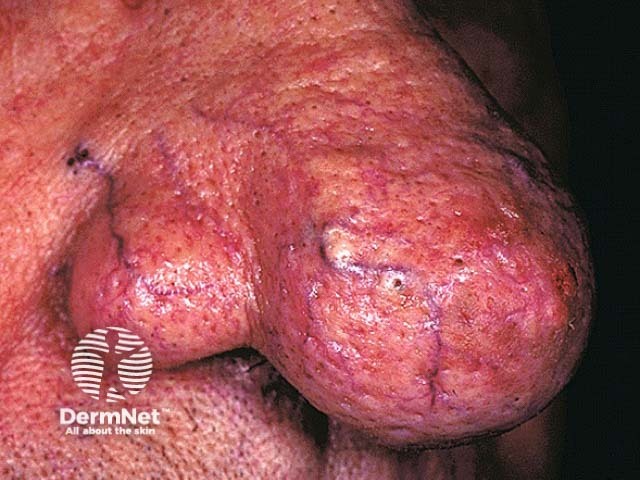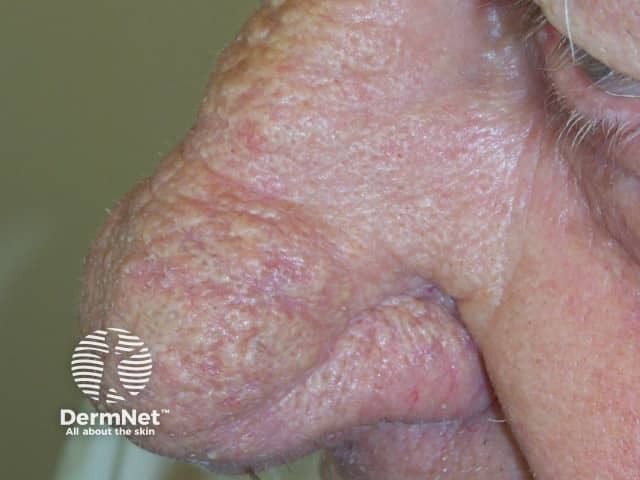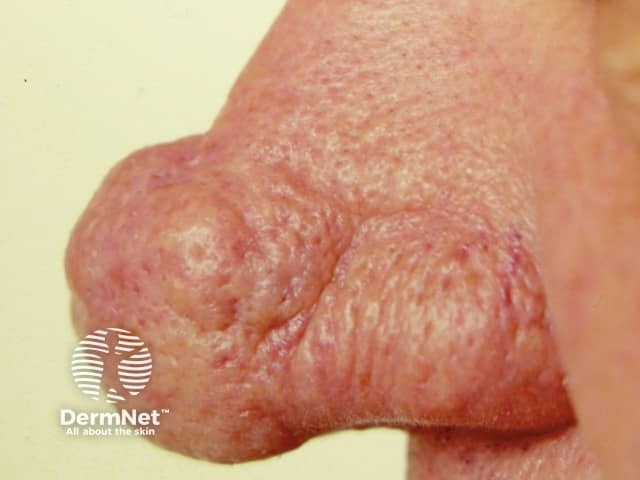Main menu
Common skin conditions

NEWS
Join DermNet PRO
Read more
Quick links
Author: Daniel Wong, Intern, Monash Medical Centre, Victoria, Australia; Chief Editor: Dr Amanda Oakley, Dermatologist, Hamilton, New Zealand, March 2014.
Introduction Causes Other forms Severity Demographics Treatment options Complications
Rhinophyma is a skin condition affecting the nose in which the skin is thickened and the sebaceous (oil) glands are enlarged. The skin appears skin coloured or red and often has prominent blood vessels, which may be thin and red (telangiectasia) or larger and purplish in hue (venulectasia). The affected skin may be bulbous, pitted due to prominent pores (which may ooze sebum or contain a scaly plug), and scarred.
Typically, rhinophyma affects the tip of the nose, although the sides and skin on the top of the nose can also be involved. Rhinophyma can be cosmetically unsightly as skin thickening may result in irregular nodular growth and deformity of the nose.
Rhinophyma is a type of rosacea. Other forms of rosacea may or may not be present [1]. Occasionally, rhinophyma is preceded by acne.

Grade 1

Grade 2

Grade 3
See more images of rhinophyma.
The cause of rhinophyma is not fully understood. Theories include:
Rhinophyma occurs in a subgroup of rosacea known as phymatous rosacea. Phymatous rosacea can also affect the following sites:
Rhinophyma, along with other forms of phymatous rosacea, is graded on a clinical scale of severity from 1 to 3 [1].
Rhinophyma predominantly affects male patients. The male-to-female ratio in patients with rhinophyma ranges from 5:1 to 30:1. This is possibly due to androgens (male hormones) [2].
Treatment of rosacea may inhibit the progression of rhinophyma but this has not been conclusively confirmed [2].
The most effective medical treatment appears to be systemic isotretinoin, which can reduce the bulk of rhinophyma [3].
Techniques used to improve the cosmetic appearance of rhinophyma include:
Basal cell carcinoma is a common form of skin cancer that has been reported to arise in rhinophyma. However, rhinophyma is not considered a precursor for malignancy [1].